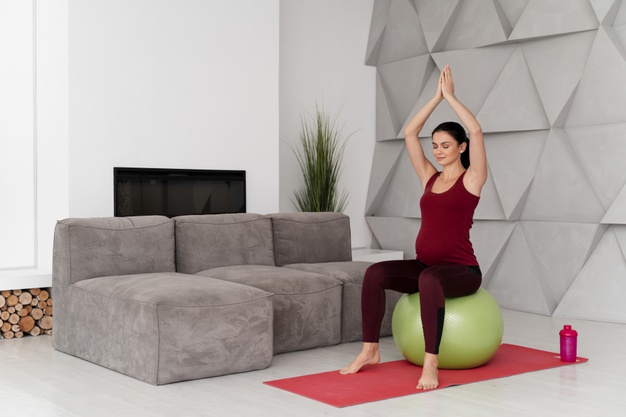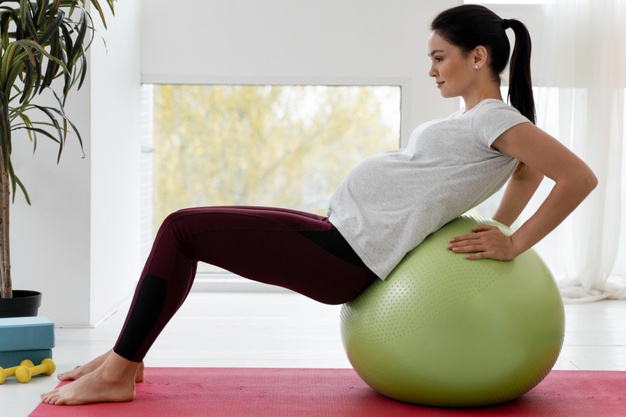Physical activity during pregnancy and after childbirth is extremely important. There is a lot of talk on the subject these days. Light training after pregnancy brings a lot of good for the young mother. It allows you to correct your posture, oxygenate your body and lose unnecessary weight, which puts a strain on your joints and spine.
When to start exercising?
The normal period of confinement for a woman giving birth by natural childbirth is about six weeks, whereas after a caesarean section this period is extended by a further six weeks. During this time, the young mother recovers, so no strenuous workouts are recommended. However, this does not mean that you should not move your body. Light training after pregnancyy will not do anything wrong, but should be consulted by a physiotherapist. This is very important because it is impossible to assess the changes that have occurred in the body on your own. There may be temporary contraindications to many activities. Any new exercise should be consulted and slowly introduced into training after pregnancy.

Training after pregnancy - what exercises to do?
Exercising during the postpartum period is definitely different from exercising after the body has fully recovered. In the first few days after the birth, exercises must be calm and gentle. They should be aimed at oxygenating the body, thus preventing potential dizziness. Moreover, they will improve the work of the diaphragm. During the postpartum period, it is also a good idea to do anticoagulation exercises. These are performed through a series of arm and leg movements. They improve circulation, thus preventing the occurrence of blood clots and stasis. Training after pregnancy should be geared towards exercising the pelvic floor muscles and activating the transversus abdominis muscle. A physiotherapist, with whom you should consult your training plans, will certainly help you choose the right physical activity.
Training after pregnancy - What to avoid?
In the first few weeks after the birth of the baby, all intense workouts should be avoided. Exercises must not cause discomfort, pain or great fatigue. Above all, all strength and body-building exercises should be avoided. Long-distance running, aerobic classes or training with jumping elements are discouraged. You must not torture yourself with tummy tucks as this can lead to a separation of the rectus abdominis muscles. Moreover, during the first two weeks training after pregnancy should be performed in low positions. In addition, all doubts should be consulted with a physiotherapist. He or she recommends that you follow his or her recommendations only, and that you stick exactly to the training plan.
Physiotherapy before childbirth
Konsultacje u fizjoterapeuty specjalizującego się w leczeniu zaburzeń układu moczowo-płciowego to częste miejsce odwiedzin dla kobiet w okresie ciąży. Wśród pacjentek znajdują się przyszłe mamy, które pragną świadomie przygotować się do porodu, a także kobiety doświadczające różnych dolegliwości związanych ze swoim wyjątkowym stanem, takich jak bóle kręgosłupa, stawów czy obrzęki kończyn. Ciąża to czas ogromnych zmian w ciele kobiety, które wpływają na całą sferę fizyczną. Przesunięcie środka ciężkości, przodopochylenie miednicy, rozszerzenie jamy brzusznej oraz rozciąganie mięśni brzucha są naturalnymi skutkami rozwijającego się płodu, jednak mogą też prowadzić do pewnego dyskomfortu.

Zadaniem fizjoterapeuty jest pokazanie przyszłej mamie, w jaki sposób może złagodzić ten dyskomfort, na przykład poprzez odpowiednie ćwiczenia fizyczne lub przyjmowanie właściwych pozycji podczas codziennych czynności. Specjalista uczący pacjentki właściwego oddychania oraz kontrolowania napięcia i relaksacji mięśni dna miednicy. Wszystkie te działania mają na celu przede wszystkim przygotowanie kobiety do porodu i zmniejszenie ryzyka ewentualnych powikłań, takich jak rozerwanie krocza. Powszechnie stosowaną metodą w pracy z kobietami w ciąży jest kinezjotaping, czyli stosowanie elastycznych taśm na wybranych obszarach ciała. Za pomocą tych taśm fizjoterapeuta może np. zmniejszyć obciążenie dolnego odcinka kręgosłupa lub stawów krzyżowo-biodrowych. Kinezjotaping doskonale sprawdza się również w łagodzeniu obrzęków kończyn, z którymi często borykają się kobiety w ciąży. Warto jednak pamiętać, że współpraca z fizjoterapeutą powinna rozpocząć się nie wcześniej niż w drugim trymestrze ciąży, gdy kobieta czuje się już lepiej, a ryzyko poronienia maleje.
Trening po ciąży a fizjoterapia uroginekologiczna
Fizjoterapia uroginekologiczna po okresie porodowym jest istotną pomocą w powrocie do pełnej sprawności. Rozejście spojenia łonowego stanowi powszechne powikłanie po okresie ciąży i porodu. Objawia się ono bólem, zwłaszcza podczas angażowania się w aktywności wymagające wysiłku. Leczenie tego schorzenia głównie opiera się na ostrożnym stylu życia oraz regularnym wykonywaniu odpowiednio dostosowanych ćwiczeń pod nadzorem fizjoterapeuty.




